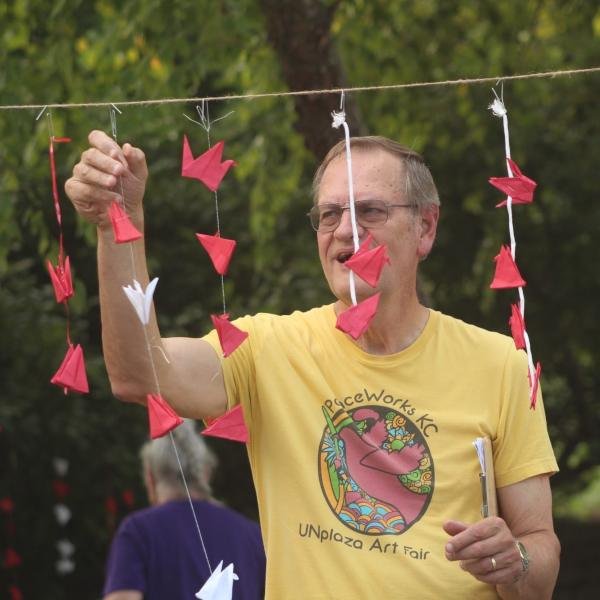If asked, “What is the world’s largest earth mover?” most folks might think of a massive machine. The German company, Krupp, makes the largest one—a strip-mine behemoth, 300 feet tall, that can fill 100,000 large dump trucks per day.
 That’s huge!
That’s huge!
But in the paradoxical nature of things, the largest earthmovers are not machines at all.
They’re earthworms.
That’s right. The lowly earthworm is credited with making modern agriculture possible. It has an unseen but vital role in crop production—breaking down organic matter, making minerals and nutrients more accessible, aerating soil for better air and water absorption.
These are Earth’s true earthmovers, up-building rather than razing. Incredibly, new research indicates that in rich farmland the weight of earthworms beneath the surface may be greater than that of the livestock grazing above!
So what do these factoids have to do with peace? A lot, it seems to me.
Consider nuclear weapons. Surely these are the Behemoths of the Earth, some 15,000 weapons of mass destruction capable in a few hours of destroying life as we know it, through massive casualties followed by nuclear winter. For seven decades (my entire lifetime) they have loomed over the world, casting a deep shadow of suspicion and fear. They seem invincible, funded globally at some $105 billion per year ($300 million per day)—twice what would be needed to meet international Millenium Development Goals to eliminate extreme poverty. And the two nations controlling 95 percent of these omnicidal weapons seem more interested in maintaining and policing membership in the exclusive Nuclear Club than they are in making or keeping pledges to reduce and eliminate nukes. Remember that 1968 Nuclear Non-Proliferation Treaty, where nuclear nations agreed to eliminate nukes if the rest of the world didn’t acquire them? Through “modernization,” the destructive power of nuclear weapons seems on the uptick rather than in decline.
But things are not always as they seem.
Beneath the surface, a civil society movement has been quietly growing that will eventually delegitimize nuclear weapons and their misguided twins—deterrence and mutually assured destruction.
Did you feel that tremor a few weeks ago? It didn’t get nearly the press it deserved; sweeping social movements seldom do—at first. But on July 7, when the United Nations adopted the Treaty on Prohibition of Nuclear Weapons, the pendulum of global public opinion registered a major shift toward the eventual tipping point of a nuclear-weapons-free world. The UN treaty “categorically prohibits the possession, use, and threat of use of nuclear weapons.”
This action demonstrates that when governments fail to represent the people, the people themselves can effect change. The term for that is “civil society,” defined as “the aggregate of non-governmental organizations and institutions that manifest the interests and the will of citizens.”
Case in point: passage of the UN treaty was led by the International Campaign to Abolish Nuclear Weapons, comprised of more than 400 non-governmental organizations from 100 nations.
And 122 of the United Nation’s 193 members adopted the treaty, which will go into effect 90 days after its ratification by 50 nations.
Let those numbers sink in. That, my peacemaking friends, is how seemingly weak and invisible forces overcome the mighty and strong.
The behemoths have their destructive day.
But civil society has the last say.
And the worm is beginning to turn …


